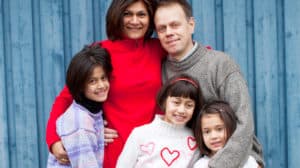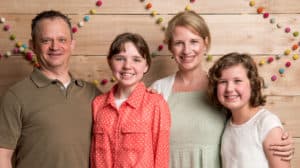Cary and Allison’s adopted daughter, Kelsey, was recently diagnosed with Reactive Attachment Disorder (RAD). As the therapist described the symptoms and behaviors, Allison wondered if Cary, who had a very rough and chaotic childhood, might have it, too. Following the appointment, Allison asked the therapist, “Can adults have attachment disorder?”
The short answer is yes. Adults rarely get formally diagnosed with RAD, and Reactive Attachment Disorder in Adults is not a diagnostic category in the DSM-5. Even so, adults can and do struggle with attachment disorder.
What is Healthy Attachment?
Attachment develops through nurturing experiences with a caregiver, usually the mother. The flow goes something like this:
(1) the infant has a need
(2) that need gets expressed with a “Waaaaaa!” or “I’m hungry!”
(3) that need gets met consistently
(4) trust develops on the part of the infant, resulting in a secure attachment to the caregiver
But any number of circumstances or adverse childhood experiences can disrupt that flow—even in an intact family. Attachment is conditional; it all depends on whether the child assesses their environment is safe enough and if there’s someone “out there” who’s continually looking out for them. If there’s question or doubt, attachment is compromised.
What Does Disrupted Attachment Look Like in Adults?
The two symptoms of attachment disorder in adulthood are (1) a deep inability to trust another person, even a spouse or close confidant; and (2) the feeling of being in a constant state of survival or hypervigilance.
Additionally, the following symptoms are often present in an adult struggling with attachment issues:
- Difficulty with emotional closeness
- A sense of “I can’t rely on others, only myself”
- Minimizing physical, emotional, or relational hurts
- Over-inflated view of self
- Tendency to keep friends, even a spouse, at arm’s length
- “Revolving door” romantic relationships
- Intense fear of being alone, excluded, or abandoned
- Minimizing or ignoring the pain or success of others
- Tendency to isolate
- Anxious, perfectionistic, or intense anger behaviors
The coping behaviors a person develops during childhood are what they will most likely display in adulthood. The four childhood attachment styles shift slightly as a person moves into their adult years.
- A secure infant seeks to be with the parent, is distressed when the parent leaves, and consoled when the parent returns. The child carries this secure attachment style into adulthood and is comfortable with their own autonomy, finding it easy to manage life’s disappointments and hurts.
- An ambivalent child feels insecure, clingy, and hypervigilant. They develop a “push-pull” method of relating, which is reflective of inconsistent parenting care. This morphs into a preoccupied or entangled adult attachment style—a person who can’t let go of abuses and betrayals while, at the same time, not allowing anyone to get close enough to comfort them in their distress. The person is frequently preoccupied with what their spouse is doing, thinking, and planning for fear of being abandoned.
- The avoidant infant shows little or no desire to be held or comforted by their caregiver—a defense mechanism resulting from cold, non-nurturing, rejecting, or abusive parenting. As insecure as the child feels, there’s no reason to approach the parent because there will be no comfort or support there anyway. In adulthood, avoidance expresses itself as dismissive or denial—an unwillingness to deal with or acknowledge past or present relational difficulties. It may even show itself in being dismissive of others’ concerns, opinions, desires, or successes.
- A child with disorganized attachment style displays a variety of unusual and disorganized behaviors: hypervigilance, “zoning out,” or rocking back and forth. These reactions of confusion and pure terror are generally regarded as evidence of abuse. This disorganized attachment style continues into adulthood and is evidenced by a disorganized or unresolved lifestyle—addictions, borderline personality disorder, isolation, or one failed relationship after another.
Unless insecure attachment styles in childhood are addressed, the child will carry these same behaviors into adulthood. Tensions and difficulties will most likely present themselves within the context of professional, personal, and marital relationships.
In fact, these attachment styles tend to be passed down from one generation to the next. In other words, an avoidant parent tends to raise avoidant children, who will in turn raise another generation of avoidant children.
If you think you, or someone you know, may have adult attachment disorder, we’d encourage you to seek help immediately.
There is Hope
While the journey toward healing may seem daunting, there are actions an adult with attachment disorder can take. There is hope!
You can start by calling our Counseling department for a free over-the-phone consultation. One of our licensed or pastoral counselors would be happy to discuss any concerns you may have. They can also provide you with referrals to a professional counselor in your area who has experience with attachment- or trauma-based issues.
Resources
INSIDE: Understanding How Reactive Attachment Disorder Thinks and Feels https://store.focusonthefamily.com/inside-understanding-how-reactive-attachment-disorder-thinks-and-feels
Web articles:




















